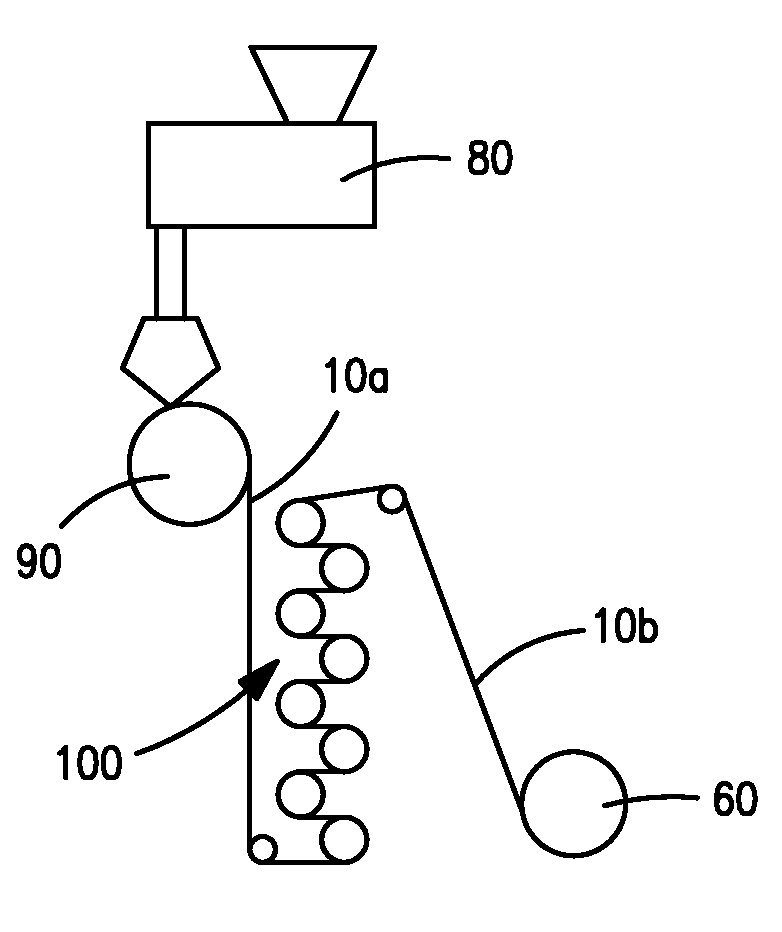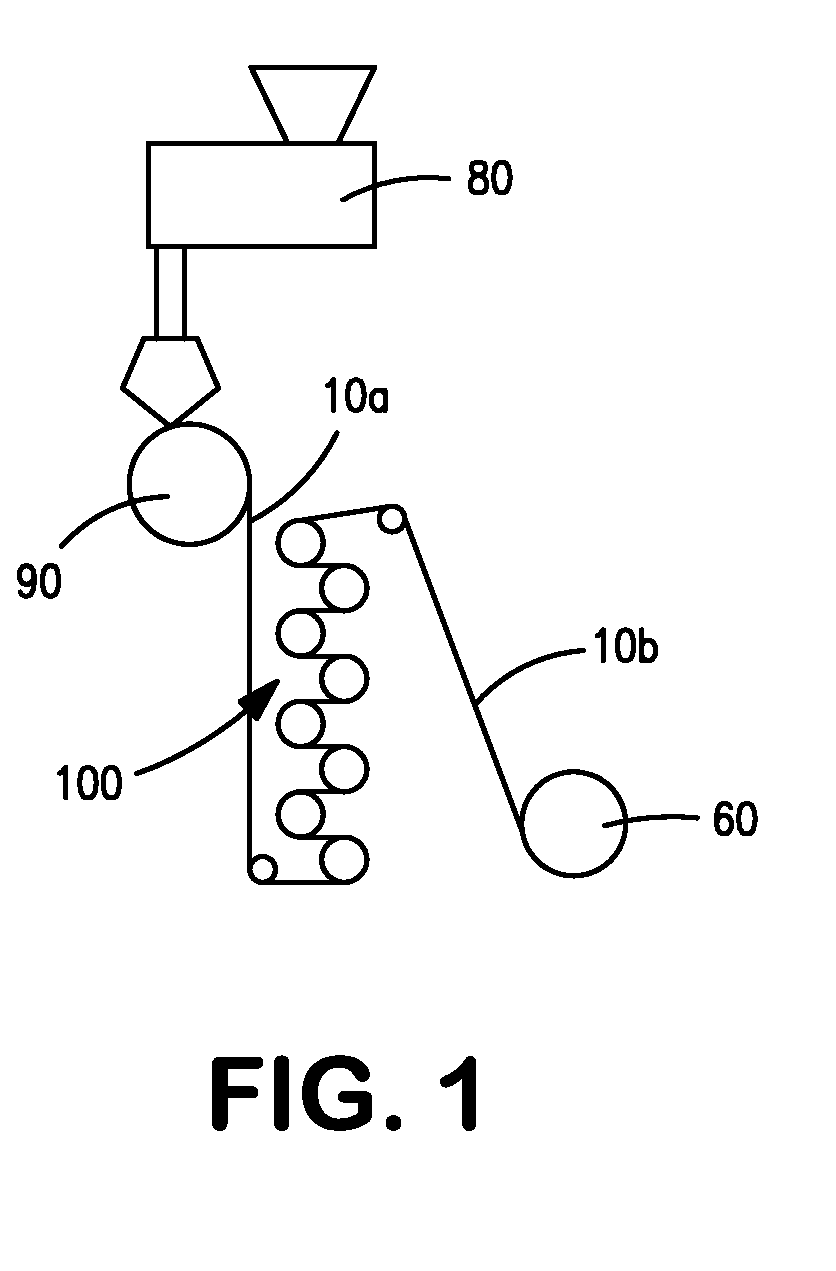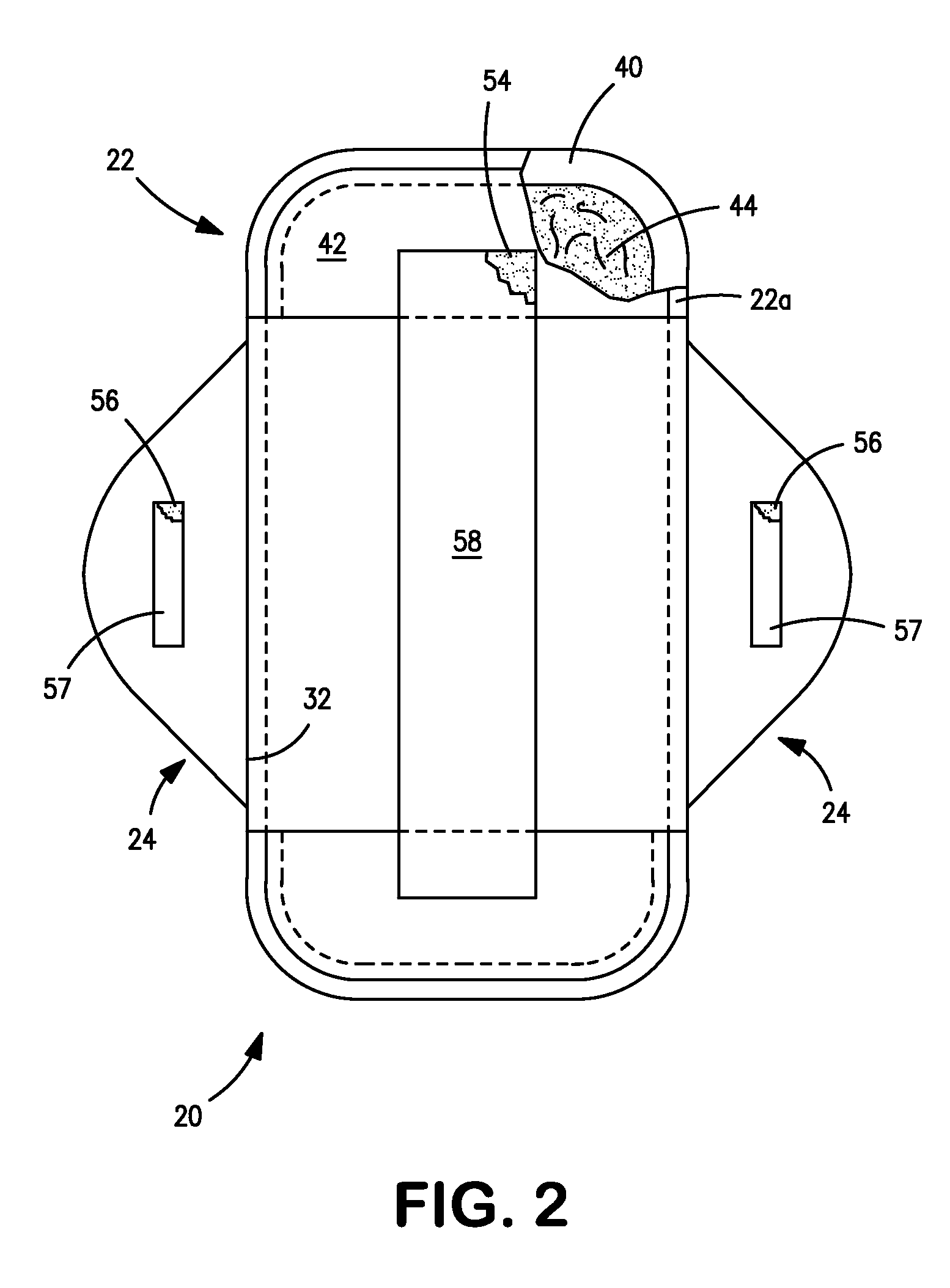Water-sensitive biodegradable film
a biodegradable film, water-sensitive technology, applied in the direction of film/foil adhesives, bandages, transportation and packaging, etc., can solve the problems of release-coated films or papers, not easily dispersed in water, blockages in the toilet,
- Summary
- Abstract
- Description
- Claims
- Application Information
AI Technical Summary
Benefits of technology
Problems solved by technology
Method used
Image
Examples
example 1
[0072]A thermoplastic potato starch (“Potato TPS”) was formed as follows. Initially, a mixture of potato starch (Penford Food Ingredients Co., Englewood, Colo.) and surfactant (Excel P-40S, Kao Corporation, Tokyo, Japan) was made at a ratio of the 99 parts of potato starch to the 1 part of surfactant. The mixture was added to a gravimetric K-Tron feeder (K-Tron America, Pitman, N.J., Model KCM-2) that fed the material into a Prism USALAB 16 Twin Screw Extruder (Thermo Electron Corp., Stone, England) at 2 pounds per hour. The extruder had ten (10) zones designated as numbers 1-10, with zone 1 being located adjacent to the feeder. Zones 1 to 9 contained alternating conveying and kneading sections, while zone 10 contained the die where the polymer melts and is shaped into a strand or film. A plasticizer (mixture of 20 wt. % water and 80 wt. % glycerol) was pumped into zone 1. The pumping rate for the plasticizer was determined using a timer and was adjusted to achieve the desired ratio...
example 2
[0076]A thermoplastic corn starch (“Corn TPS”) was formed as follows. Initially, a mixture of corn starch and surfactant (Excel P-40S, Kao Corporation, Tokyo, Japan) was made in a kitchen mixer at a ratio of the 99 parts of potato starch to the 1 part of surfactant. The mixture was added to a gravimetric feeder (K-Tron America, Pitman, N.J., Model KCM-2) that fed the material into a Prism USALAB 16 Twin Screw Extruder (Thermo Electron Corp., Stone, England) at 2 pounds per hour. A plasticizer (mixture of 20 wt. % water and 80 wt. % glycerol) was pumped into zone 1. The pumping rate for the plasticizer was determined using a timer and was adjusted to achieve the desired ratio of the plasticizer to starch in the final composition. A vent was also provided at zone 9 to release steam generated due to the presence of the added water in the plasticizer and inherent moisture in the starch. The temperature profile for zones 1 to 10 was 50° C., 80° C., 100° C., 140° C., 140° C., 140° C., 120...
example 3
[0080]The mechanical properties of the films of Examples 1 and 2 were tested after being soaked in water. Specifically, the films were separately cut into a “dog-bone” and then soaked in tap water for 20 minutes to assess the film property changes. The results are set forth below in Table 3.
TABLE 3Mechanical Properties of Films after Soaking in WaterFilm ThicknessModulusStrain-at-BreakPeak StressEnergy-to-Break(mil)(MPa)(%)(MPa)(J / cm3)SampleMDCDMDCDMDCDMDCDMDCD11.31.2595557396220.721.41.4463226924538331.71.921414993173240.641.21.326573864684211.353.335312771303141.2
[0081]In these particular samples, the films were sensitive to water with a change in mechanical properties, but they did not generally disperse or disintegrate.
PUM
| Property | Measurement | Unit |
|---|---|---|
| glass transition temperature | aaaaa | aaaaa |
| glass transition temperature | aaaaa | aaaaa |
| thickness | aaaaa | aaaaa |
Abstract
Description
Claims
Application Information
 Login to View More
Login to View More - R&D
- Intellectual Property
- Life Sciences
- Materials
- Tech Scout
- Unparalleled Data Quality
- Higher Quality Content
- 60% Fewer Hallucinations
Browse by: Latest US Patents, China's latest patents, Technical Efficacy Thesaurus, Application Domain, Technology Topic, Popular Technical Reports.
© 2025 PatSnap. All rights reserved.Legal|Privacy policy|Modern Slavery Act Transparency Statement|Sitemap|About US| Contact US: help@patsnap.com



